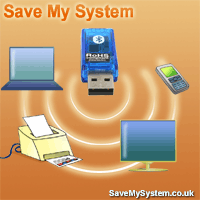The iPhone and iPad, as everybody knows, are two highly well-known, bestselling gadgets from Apple. The iPhone is really a smart phone that can be used to make calls, send text, e-mail messages, read books on, play music and videos, browse the web, and a lot more.
The number of applications that can be downloaded and utilised on the iPhone is only limited by its storage capacity - and the purse of the iPhone owner. Some applications (or "apps" for brief) are totally free, while others cost a certain amount, normally $1 or $2 for essentially the most well-known apps.
However, the iPad is really a considerably bigger tablet device, which is used mainly for connecting on-line, reading books, and playing multimedia files. Essentially, the iPad can do all of the items that the iPhone is capable of, except make calls and send text messages. (You can find some iPad apps that do enable the sending of texts, but with specific restrictions.)
In summary, the iPhone and also the iPad are much the same in terms of what they can do. Their glaring difference is that the iPhone is really a phone, while the iPad is just not. In other words, the iPhone can be - and is primarily - used to make phone calls, while the iPad is much more like a netbook or portable individual computer.
Another difference that stands out is their sizes. The iPhone has a 480x320 touchscreen, while the iPad has a significantly bigger one that measures 1024x768 pixels. Looking at the two devices, about six iPhone units can be placed on the surface of an iPad.
The size difference is actually a key factor in comparing iPad and iPhone apps. Practically all iPhone apps (except those for generating calls) can be downloaded on the iPad. The apps will function fairly much the same except that they are going to seem bigger to fit the bigger iPad touchscreen.
But not all apps meant for the iPad will work on the smaller iPhone. Apps that are native towards the iPad use higher detail to take benefit of the bigger touchscreen space. If these apps could possibly be "shrunk" on the smaller iPhone screen, they wouldn't appear as great-in fact, they might also be unreadable.
This really is the reason why native iPad apps can't be downloaded to an iPhone. However,But, just to create a point clear, the reverse can be done: most iPhone apps can be downloaded to and used on an iPad.
The number of applications that can be downloaded and utilised on the iPhone is only limited by its storage capacity - and the purse of the iPhone owner. Some applications (or "apps" for brief) are totally free, while others cost a certain amount, normally $1 or $2 for essentially the most well-known apps.
However, the iPad is really a considerably bigger tablet device, which is used mainly for connecting on-line, reading books, and playing multimedia files. Essentially, the iPad can do all of the items that the iPhone is capable of, except make calls and send text messages. (You can find some iPad apps that do enable the sending of texts, but with specific restrictions.)
In summary, the iPhone and also the iPad are much the same in terms of what they can do. Their glaring difference is that the iPhone is really a phone, while the iPad is just not. In other words, the iPhone can be - and is primarily - used to make phone calls, while the iPad is much more like a netbook or portable individual computer.
Another difference that stands out is their sizes. The iPhone has a 480x320 touchscreen, while the iPad has a significantly bigger one that measures 1024x768 pixels. Looking at the two devices, about six iPhone units can be placed on the surface of an iPad.
The size difference is actually a key factor in comparing iPad and iPhone apps. Practically all iPhone apps (except those for generating calls) can be downloaded on the iPad. The apps will function fairly much the same except that they are going to seem bigger to fit the bigger iPad touchscreen.
But not all apps meant for the iPad will work on the smaller iPhone. Apps that are native towards the iPad use higher detail to take benefit of the bigger touchscreen space. If these apps could possibly be "shrunk" on the smaller iPhone screen, they wouldn't appear as great-in fact, they might also be unreadable.
This really is the reason why native iPad apps can't be downloaded to an iPhone. However,But, just to create a point clear, the reverse can be done: most iPhone apps can be downloaded to and used on an iPad.
About the Author:
Laura Bell Deisi is a part time writer and also enjoy writing about little black dress and other various topics.

No comments:
Post a Comment